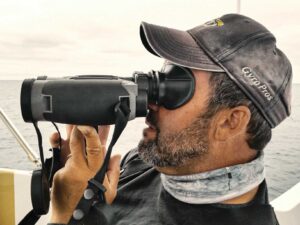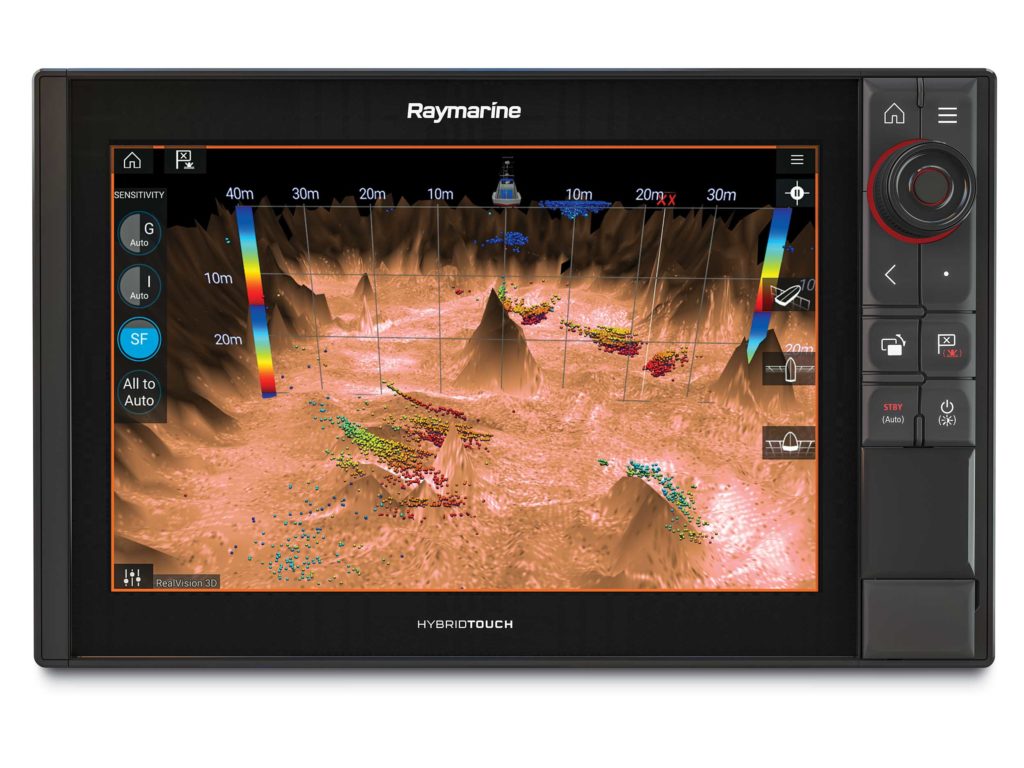
Not so long ago, if you wanted to add side- and down-scanning sonar capabilities to your fish-finding arsenal, you needed at least two transducers: one for the depth-sounder function, and another for scanning features. That’s no longer the case, thanks to a new breed of multifunction transducers that combine a number of sonar elements into a single, compact unit.
Multipurpose transducers from major electronics brands such as Furuno, Garmin, Humminbird, Lowrance, Raymarine and Simrad can save you money because one transducer does the work that used to require two or more. They are available in a variety of through-hull and transom-mount versions. The latter style has proven most popular on boats under 30 feet in length, particularly because installation is simpler and doesn’t require cutting a large hole in the hull.
When networked with a compatible multifunction display or combo unit, these transducers provide a suite of fish- and structure-finding functions, including side-scan, down-scan and depth sounder, often with a choice of frequencies for each. What’s more, you can utilize more than one function at the same time, thus affording multiple perspectives simultaneously. Some systems also combine modes into a single integrated view. Let’s look at what you get in today’s transom-mount versions.
Sounder Modes
Multifunction models such as the 3-in-1 Active Imaging transom-mount transducer ($299) for Lowrance and Simrad MFDs include a depth-sounder element. “The 3-in-1 offers a number of frequencies,” says John Keizer, senior pro staffer for Lowrance in the Pacific Northwest. “There are 200 and 83 kHz single frequencies, as well as high chirp and medium chirp.”
Garmin’s Ultra High Definition ClearVu GT54UHD transom-mount, all-in-one transducer ($349.99) offers a high-frequency (150 to 240 kHz) chirp model for the Garmin EchoMap Ultra 106SV, 126SV and others.
In another example, Raymarine’s RV-100 All-in-One RealVision 3D transom-mount transducer ($399.99) also offers a high-chirp depth -sounder, as well as a traditional 50/200 kHz sounder for the Axiom and Axiom+ series MFDs.
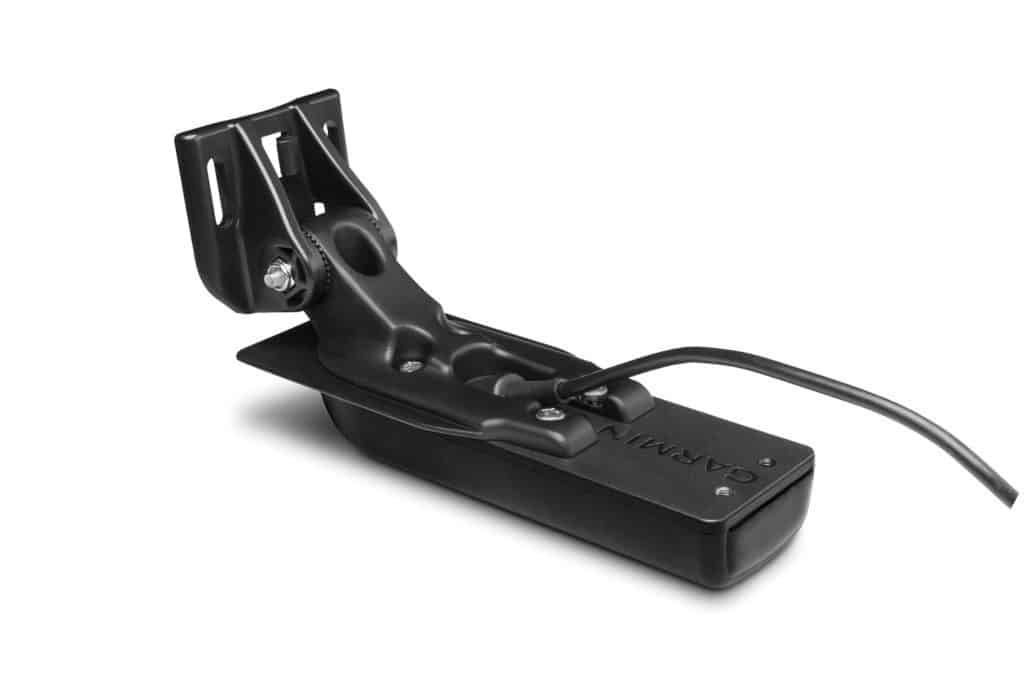
The maximum depth rating for the sounder functions in these transducers ranges from 800 to 1,000 feet—plenty deep for most saltwater fishing. Expect the greatest fish-finding effectiveness at depths down to 300 feet.
Side Action
Side-scanning modes on these transducers offer detailed views of the bottom and fish on both sides of the boat, thanks to elements that continually scan a thin swath of the water column and ocean floor.
This can be particularly helpful when looking for wrecks, reefs and rock piles because you view a much broader area than with the sounder function. How broad? Much depends on the frequency of the side-scanning function, and most of these transducers offer a user-selectable choice.
With the SideVu mode of the Garmin GT54UHD, for example, the range is 500 feet to each side of the boat when set to 455 kHz. However, that range shrinks to 125 feet on each side when the SideVu is set to 1,200 kHz, also known as Ultra High Definition mode.
While the range decreases, the detail ramps up to the point of depicting lifelike images of the bottom structure and fish.
Down and Away
The down-scanning function is much like side-scanning, but directed downward. It rapidly scans thin, side-to-side slices of the water column and the bottom under the boat. With the 3-in-1 transducer, for instance, Lowrance and Simrad MFDs enable you to fine-tune the DownScan mode by selecting the frequency: 455 kHz for broader coverage and greater depth range, or 800 kHz for greater detail.
“I like to use 455 kHz when trolling for albacore,” Keizer says. “The wider sweep is better for spotting fast-moving tuna in the upper part of the water column.” When looking for structure spots, however, he finds that 800 kHz offers a more detailed view of rock piles and reefs.
Motion Stabilized
Some multifunction transducers feature electronic stabilizers to enhance sonar imagery. Raymarine’s RV-100 has a built-in attitude and heading reference system that automatically compensates for vessel motion—pitch, roll, yaw and heave—that might otherwise distort views of the bottom and fish in rough seas.
Furuno’s TM260 combo transom mount transducer ($1,599), which features Furuno’s powerful DFF-3D multibeam sonar capability, along with 50/200 kHz depth-sounder elements, also includes a built-in motion sensor to stabilize sonar imagery and eliminate distortion, especially when using the DFF-3D mode.
Custom Views
There are also systems capable of combining one or more features in a single view. For instance, when matched with a compatible Lowrance or Simrad MFD, the 3-in-1 transducer provides users the ability to integrate the DownScan feature with the chirp sounder in a feature called FishReveal.
The DownScan portion enhances the detail of bottom structure, while the chirp sounder creates greater target separation to recognize fish returns more easily.
Certain transducers help create 3D representations of the underwater world. With the Raymarine RV-100 transducer and a compatible Axiom or Axiom+ MFD, for example, anglers access a feature called RealVision 3D, which translates scanning sonar returns of structure, bait and fish in a lifelike, three-dimensional perspective, letting anglers pan, tilt and zoom the 3D image to view it from any angle.
When coupled with Furuno’s DFF-3D sonar module and a TZtouch2 or TZtouch3 MFD, Furuno’s TM260 multibeam transducer also produces remarkably realistic 3D views of the ocean floor and the fish above it.
Multifunction, transom-mount transducers represent one of the most affordable ways to access the wide array of advanced sonar capabilities available in today’s MFDs. Adding one to your boat will multiply your chances of finding and catching fish.
New Electronics
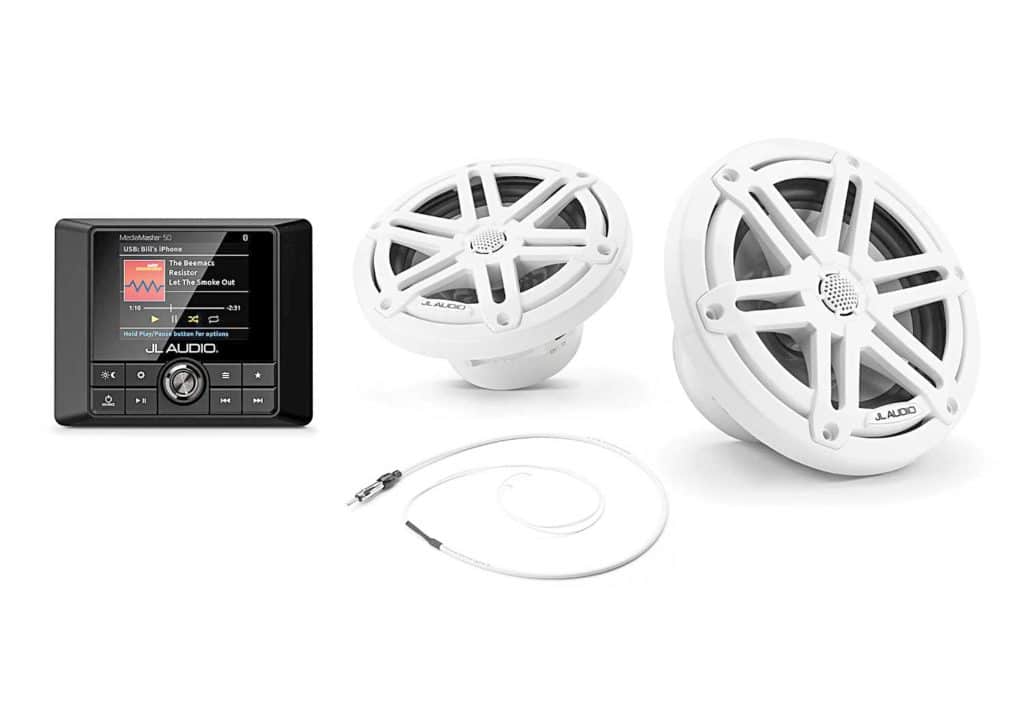
The JL Marine Audio Starter Kit is for boaters looking to add a two-speaker stereo or upgrade an older system. The kit features a MediaMaster MM-50 marine source unit with a 2.8-inch full-color LCD screen, Bluetooth and NMEA 2000 connectivity, a 100-watt amplifier, a pair of 6.5-inch JL Marine Audio coaxial speakers—with white sport grilles—designed for harsh marine use, and an AM/FM hideaway antenna. $629.99; jlaudio.com
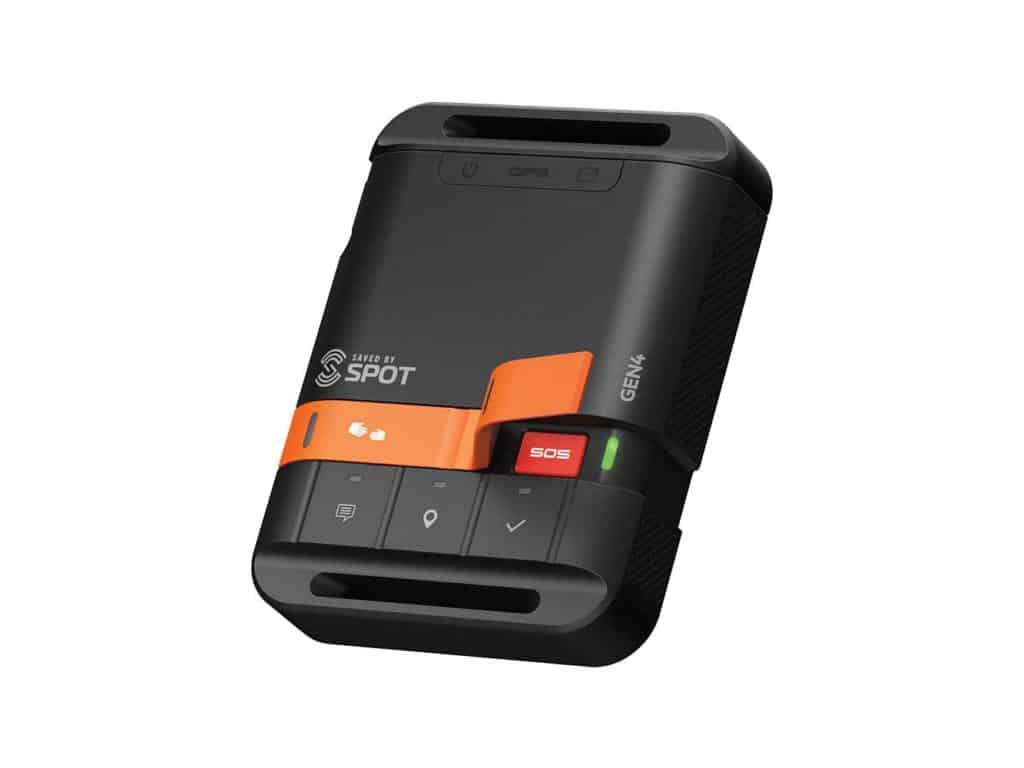
The Spot Gen4 offers more tracking features and mapping. It is engineered for affordable communication with friends, family and other boaters, as well as the GEOS International Emergency Response Coordination Center (IERCC), using connectivity by Globalstar. There are unlimited shared views with an easy interface. The company says the Spot Gen4 offers the longest battery life in the product category. $149.99; findmespot.com
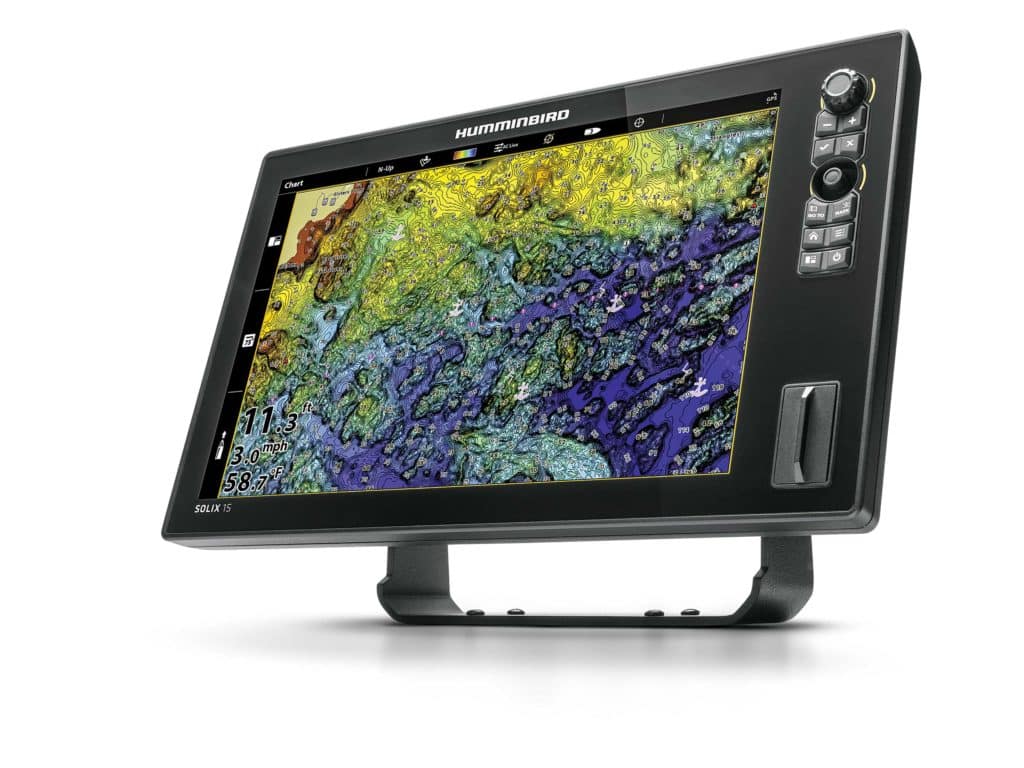
Humminbird’s CoastMaster charts provide accurate coverage for all US coastal waters on a single card. The charts are designed to help boating anglers identify key fish-holding areas and navigate safely using spot soundings, depth contours, points of interest, and navigational aids. They include a tides and currents tool, and are compatible with Humminbird Helix G3/G3N and all Solix chart-plotter models. $149.99; humminbird.com


